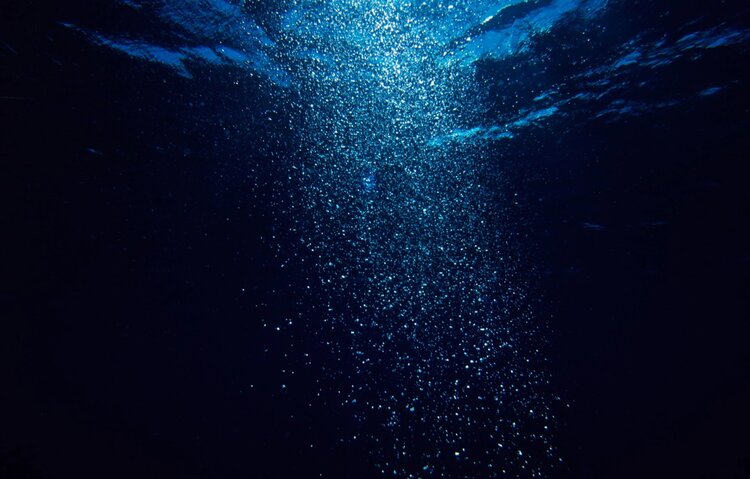Unveiling the Ocean’s Depths: A Dive into the Abyss
The ocean, a vast and mysterious realm, covers over 70% of our planet’s surface. Its depths hold countless secrets, from awe-inspiring marine life to hidden geological formations. But how deep does this watery world truly extend? This comprehensive exploration delves into the ocean’s depths, uncovering the science behind measurement, venturing into the intriguing zones that define the ocean’s depths, and unveiling the fascinating creatures that have adapted to thrive in these extreme environments.
Fathoming the Depths: Unveiling Measurement Techniques
Accurately measuring the ocean’s depth is a complex feat. Here are some of the primary tools used to map the ocean floor:
- Echolocation (Sonar): This method works similarly to radar, emitting sound waves that bounce off the seabed and return to the surface. By measuring the time it takes for the sound waves to travel back, scientists can calculate the depth.
- Satellite Altimetry: Satellites orbiting Earth measure the slight variations in sea level caused by underwater features like mountains and trenches. This data helps create detailed maps of the ocean floor.
- Direct Measurement: For very precise measurements, submersibles or research vessels may use weighted lines or pressure sensors to directly measure the depth.
A Realm of Layers: Diving into the Ocean’s Depth Zones
The ocean can be broadly divided into five distinct depth zones, each with unique characteristics and inhabitants:
- Sunlit Zone (Euphotic Zone): Extending from the surface to a depth where sunlight can no longer penetrate (around 200 meters), this zone is the most productive part of the ocean. Phytoplankton, microscopic organisms that form the base of the marine food chain, thrive here. Fish, coral reefs, and other marine life abound in this well-lit zone.
- Twilight Zone (Mesopelagic Zone): From 200 meters to around 1,000 meters deep, sunlight begins to fade. Many marine creatures in this zone bioluminesce, creating their own light to attract prey or communicate. Squid, jellyfish, and bioluminescent fish are some of the inhabitants of this dimly lit realm.
- Midnight Zone (Bathypelagic Zone): Sunlight is absent in this zone, which extends from 1,000 meters to around 4,000 meters deep. Cold temperatures, high pressure, and complete darkness define this environment. Deep-sea fish with bioluminescence, anglerfish with their glowing lures, and strange invertebrates adapted to the harsh conditions have made this zone their home.
- Abyssopelagic Zone: The abyss, ranging from 4,000 meters to 6,000 meters deep, is the largest zone in the ocean. The pressure here is immense, and temperatures hover just above freezing. Scavengers, sea cucumbers, and blind deep-sea fish have adapted to survive in this food-scarce environment.
- Hadalpelagic Zone (Trenches): The deepest reaches of the ocean, found in trenches like the Mariana Trench, plunge to over 11,000 meters. This zone is characterized by extreme pressure, near-freezing temperatures, and complete darkness. Unique life forms, like extremophile bacteria and specially adapted crustaceans, cling to existence in this unforgiving environment.
Creatures of the Deep: Life in the Ocean’s Abyss
The ocean’s depths harbor a fascinating array of creatures that have evolved to thrive in extreme conditions:
- Bioluminescent Wonders: Many deep-sea creatures use bioluminescence to produce light, illuminating their surroundings and attracting prey. Anglerfish lure unsuspecting victims with a glowing appendage, while flashlight fish use bioluminescence for communication.
- Pressure-Defying Denizens: Deep-sea organisms have adapted to withstand immense pressure. Some fish have flexible bones and bodies that can withstand the crushing depths, while others have internal fluids that resist compression.
- Cold-Blooded Adaptations: Deep-sea creatures thrive in frigid temperatures. Enzymes that function at near-freezing points and antifreeze proteins in their blood help them survive the cold.
- Chemotrophs: Thriving in Darkness: In the absence of sunlight, some deep-sea life forms rely on chemosynthesis for energy. They harness chemicals like hydrogen sulfide spewing from hydrothermal vents to fuel their existence.
Unveiling the Mysteries: Exploration of the Deep Ocean
The vastness of the ocean depths has long captured our imagination, yet much of it remains unexplored. Here’s a glimpse into the ongoing efforts to unravel the mysteries of this hidden world:
- Manned Submersibles: These specialized vessels, like the famed Deepsea Challenger, allow scientists to directly observe the deep sea and collect valuable data.
- Remotely Operated Vehicles (ROVs): ROVs are tethered underwater vehicles controlled from the surface or support vessels. They offer a more cost-effective way to explore the deep sea and can be equipped with cameras, sensors, and robotic arms for sample collection.
- Autonomous Underwater Vehicles (AUVs): These untethered drones can navigate pre-programmed courses and collect data without direct human control. AUVs provide a valuable tool for exploring vast areas of the ocean floor.
The Importance of Deep-Sea Exploration:
Understanding the deep ocean is crucial for various reasons:
- Climate Change: The deep sea plays a vital role in regulating Earth’s climate by absorbing carbon dioxide. Studying this environment helps us understand the impact of climate change on our planet.
- Marine Biodiversity: The deep sea is home to a vast array of unknown species. Exploration efforts can help us understand the diversity of life on Earth and identify potential new resources for medicine and biotechnology.
- Mineral Resources: Hydrothermal vents and deep-sea formations might hold valuable mineral deposits, including rare earth elements critical for modern technology. Sustainable exploration of these resources is an ongoing area of research.
The Future of Deep-Sea Exploration:
The future of deep-sea exploration holds exciting possibilities:
- Advanced Technologies: Developments in robotics, sensor technology, and autonomous vehicles will continue to enhance our ability to explore the deep sea.
- International Collaboration: Deep-sea exploration is a global endeavor requiring international cooperation to share resources and knowledge.
- Sustainable Exploration: Protecting the fragile deep-sea ecosystem is paramount. Sustainable exploration practices and responsible resource management are essential for future research efforts.
Conclusion: A Journey into the Unknown
The ocean’s depths continue to hold countless mysteries, waiting to be unraveled. Through ongoing exploration, scientific advancements, and a commitment to sustainability, we can unlock the secrets of this hidden world and ensure its protection for generations to come. As we delve deeper into the abyss, we not only expand our understanding of the planet but also gain valuable insights that can benefit humanity as a whole.
FAQ: Ocean Depths
- What is the average depth of the ocean? The average depth of the ocean is around 3,700 meters (12,100 feet).
Read more about it:https://greyhoundsverdevalley.com/what-time-does-mcdonalds-stop-serving-breakfast/



